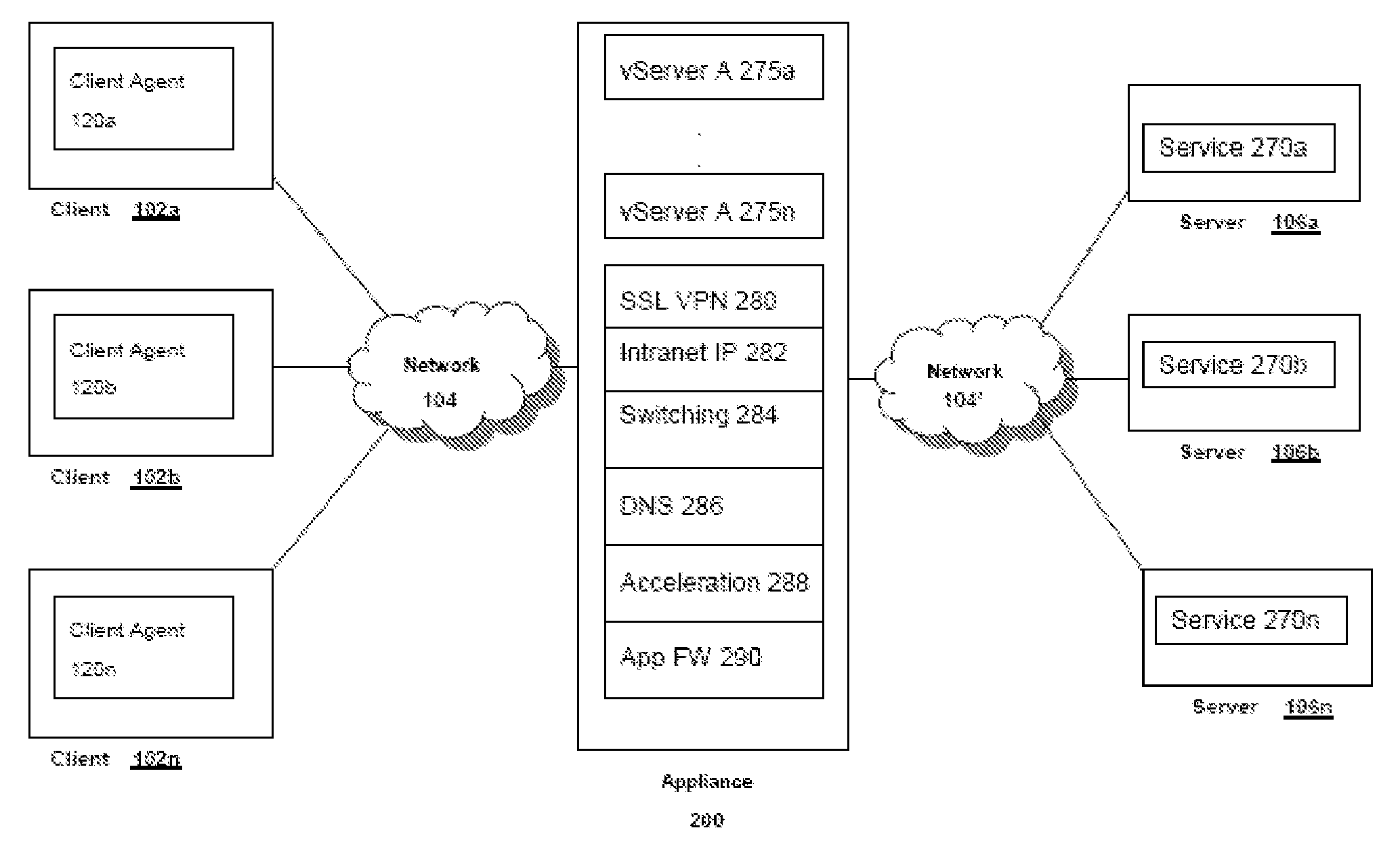Systems and methods for bulk encryption and decryption of transmitted data
a technology of transmitted data and encryption, applied in the field of encrypted communications, can solve the problems of slowing down client access, insufficient solution for all networks, and the number of appliance processor cycles available for other tasks, and achieve the effect of efficient buffering and encrypting data
- Summary
- Abstract
- Description
- Claims
- Application Information
AI Technical Summary
Benefits of technology
Problems solved by technology
Method used
Image
Examples
example 1
[0149]
Full SSL handshake, appliance acting as SSL serverMessageAppliance ActionsClient Hello →Buffer the Client-Hello message. Server HelloForm the Server-Hello message and send the messageout. Store the 32 byte random part of the Server-Helloand other information in SSL session data structure. Server CertificateRetrieve the previously generated Server Certificatemessage from storage. Send the message out. Server Hello DoneRetrieve the previously generated Server Hello Donemessage from storage. Send the message out.Client Key Exchange →Buffer the Client-Key-Exchange message.Client Change Cipher Specs →No buffering for this message. This message is not partof the handshake record.Client Finish →Send the start address and lengths of the bufferedmessages and generated messages to dedicatedcryptographic processing card for:1. Decryption of the Client-Key-Exchange message.2. Creation of master-secret and session keys from pre-master secret.3. Computation of message digest for SSL ...
example 2
[0150]
Session resume handshake, appliance acting as SSL serverMessageAppliance ActionsClient Hello →Buffer the Client-Hello message. Server HelloForm the Server-Hello message and send the messageout. Store the 32 byte random part of the Server-Helloand other information in SSL session data structure. Server Change CipherGenerate message and send out. No buffering for thisSpecsmessage. Non-handshake record. Server FinishCall card function to:1. Create key-block.2. Create Server Finish message.3. Computation of message digest for SSL handshakeSend the card-generated Server-Finish message out.Client Change Cipher Specs →No buffering for this message. Non-handshake record.Client Finish →Verify predicted Client-Finish (RC4), OrCall card function to decrypt the Client-Finish(DES / 3DES, AES) and verify the Finish message.
example 3
[0151]
SSL Handshake using ephemeral RSA keys, appliance acting as SSL serverMessageAppliance ActionClient Hello →Buffer the Client-Hello message. Server HelloForm the Server-Hello message and send the messageout. Store the 32 byte random part of the Server-Helloand other information in SSL session data structure. Server CertificateRetrieve the previously generated Server Certificatemessage from storage. Send the message out. Server Key ExchangeForm the Server Key Exchange and send the messageout.Use card function to offload RSA_sign operation. Server Hello DoneRetrieve the previously generated Server Hello Donemessage from storage. Send the message out.Client Key Exchange →Buffer the Client-Key-Exchange message.Client Change Cipher Specs →No buffering for this message. Non-handshake record.Client Finish →Send the start address and lengths of the bufferedmessages to card for:1. Decryption of the Client-Key-Exchange message.2. Creation of master-secret and session keys from pre...
PUM
 Login to View More
Login to View More Abstract
Description
Claims
Application Information
 Login to View More
Login to View More - R&D
- Intellectual Property
- Life Sciences
- Materials
- Tech Scout
- Unparalleled Data Quality
- Higher Quality Content
- 60% Fewer Hallucinations
Browse by: Latest US Patents, China's latest patents, Technical Efficacy Thesaurus, Application Domain, Technology Topic, Popular Technical Reports.
© 2025 PatSnap. All rights reserved.Legal|Privacy policy|Modern Slavery Act Transparency Statement|Sitemap|About US| Contact US: help@patsnap.com



